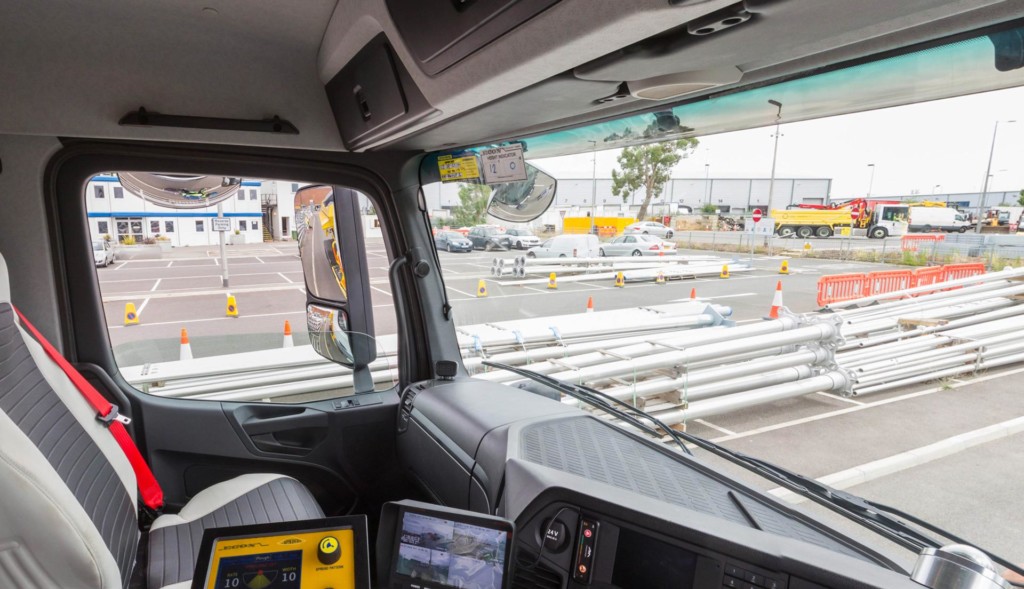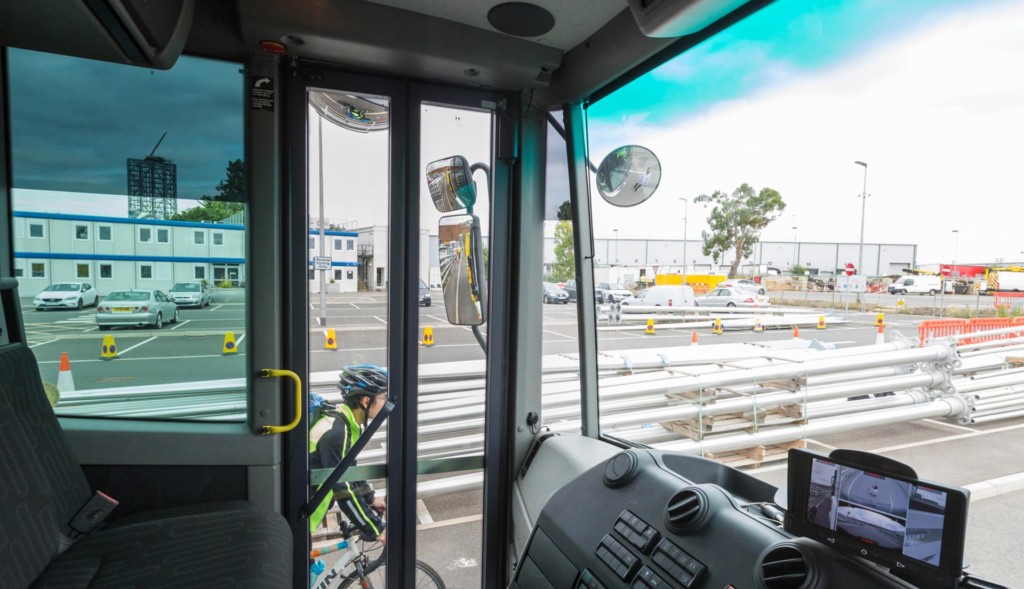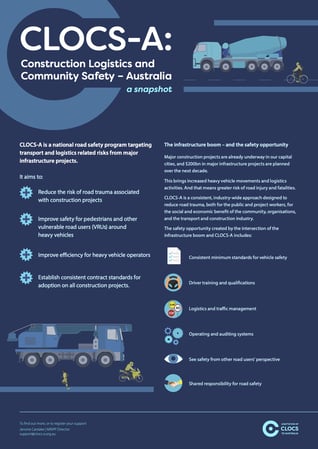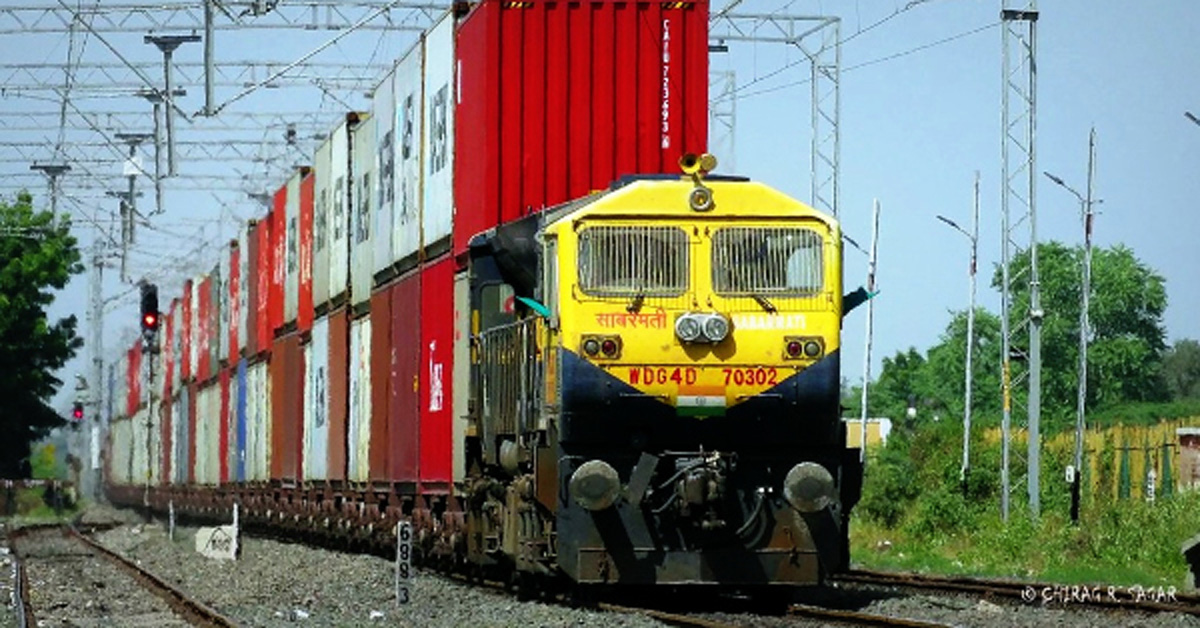The Impact of Inland Rail on Trucks in Australia
SPEED LIMITING AND SAFETY A KEY ISSUE One of Australia’s most ambitious infrastructure projects in decades – Inland Rail from Melbourne to Brisbane –...

Brisbane’s successful bid to host the 2032 Olympics is likely to result in a construction boom the likes of which the region has never seen – not just for Games facilities but also for transport infrastructure and accommodation. This means more construction and heavy vehicles on the roads in Brisbane and SE QLD.
Such was the case in London for the 2012 Olympics – and with it came an unacceptable number of vulnerable road user (VRU) fatalities with up to six cyclists a month being killed in London.
The rising number of VRU deaths between 2008 and 2012 revealed that 55% of cyclist fatalities were because of a collision with a heavy goods vehicle, with construction vehicles being disproportionately represented.
In 2012, Transport for London (TfL) commissioned an independent review of the construction sector’s transport activities to understand the causes of these collisions and how they might be prevented.
Now, at an exciting time in Queensland’s history, Brisbane is about to face these same challenges.
While the river city promotes itself as a new world city and looks to maximise the tourism and business opportunities that will ensue from a global focus on Brisbane, having an outstanding safety record is paramount. What can Brisbane learn from the London experience?
Read on to discover
Research carried out by Transport for London, covering the period 2008 to 2013, found that:
A subsequent 2016 Study found:

In 2013, the Mayor of London (now the UK Prime Minister), Boris Johnson, set out his vision in ‘Safe Streets for London: The Road Safety Action Plan for London 2020’. It included a target to reduce by 2020 the number of people killed or seriously injured in collisions by a further 40% on earlier targets. That goal was achieved by 2015 and then doubled again for 2020.
At the same time, the UK construction logistics industry identified actions to improve road safety, which led to the establishment of a single standard, known as the “CLOCS (Construction Logistics and Community Safety) Standard”, now recognised as a world leading approach due to its rapid success – a 47% reduction in fatal and serious crashes between heavy vehicles and VRUs within two years.
A key element of the CLOCS Standard is a Work Related Road Risk (WRRR) Standard, which sets the standard for Construction companies (and drivers) to follow with their vehicles on roads. Transport For London introduced WRRR requirements into its procurement contracts in 2012.
The plans and actions promoted several key safety initiatives and included regulations for vehicles under and over 3.5 tonnes to make vehicles safer.
On construction logistic vehicles over 3.5 tonnes new safety equipment was required:
The positive results have led to the establishment of the Direct Vision Standard which will use a ‘star rating’ from 0 to 5 stars to rate construction and other HGVs based on the level of direct vision the driver has from the cab. Only HGVs with 3 stars or above will be allowed on London’s roads by 2024.
Four other initiatives have been adopted or are currently being tested:
1. Training — Since 2015 Vulnerable Road User safety training is a part of Drivers Certificate of Professional Competence for HGV Drivers.
2. Cab re-design — The London Cycling Campaign has developed a safer lorry design, which it has called for the construction industry to adopt. The design includes a lower seating position, larger windows and early warning cameras and sensors, to give drivers a clearer and easier view of what’s happening immediately around their vehicle. (See next image.) Research has found that when VRUs and vehicle drivers can make eye contact, VRUs feel safer as they know they have been seen.

3. Collision avoidance technology — New collision avoidance technology is being developed and introduced. This uses sensors to detect the presence of a cyclist on the HGV’s nearside and software that predicts the path and speed of the cyclist and the HGV. If it predicts the HGV is going to hit the cyclist when it turns, it automatically applies the HGVs brakes to bring it to a stop. An analysis of 19 fatal accidents involving a cyclist and a left-turning HGV concluded that 15 of these would have been completely avoided and 3 would have been less severe with the new system.
4. Autonomous emergency braking — From November 2015, autonomous emergency braking is now required as standard on most newly registered HGVs. It warns the driver of a potential collision, and if the driver does not brake (or does not brake hard enough) it executes emergency braking (to 5 m/h)
In fact, creating better designed and safer vehicles was one of six key priorities announced by Transport for London in 2015. Source.
In Australia, the National Road Safety Partnership Program (NRSPP), an industry and academic initiative with Monash University Accident Research Centre, is collaboratively adapting London’s CLOCS Standard to Australia and is advocating for its adoption by the Australian construction industry via the CLOCS-A (Australia) Standard.
The NRSPP has over 180 partner organisations, including the Local Government Association, and has established a Memorandum of Understanding to formalise the CLOCS-A which TfL did when establishing CLOCS. To date, CLOCS-A has 24 signatures and a further 30 supporting, including SGESCO-MAX. Supporters include:
Notably:
Metro Sydney and Victoria’s Major Transport Infrastructure Authority, both NRSPP partners, have already adopted several of the CLOCS initiatives for infrastructure projects being developed across their metropolitan regions. This required companies tendering for any work to meet the CLOCS-A Standard.
Improving road safety has been a constant focus for the Brisbane City Council as part of its Transport Plan for Brisbane – Strategic Directions. Its various road safety programs include local safety improvements in residential neighbourhoods and high pedestrian areas such as local area traffic management (LATM), suburban corridor modernisation, which encompasses bike lanes, speed limiting and other regulations. Plus, the council identified nine pedestrian safety targets via their 2018 Move Safe Brisbane Citywide Pedestrian Safety Review.
These are all welcome initiatives however they don’t go far enough in obligating users of our roads – in particular, those likely to cause the most damage – to take greater responsibility for their safe transit on our roads.
This is what London did in the UK with its CLOCS Standard and WRRR Standard.
We need ambitious safety targets when it comes to Vulnerable Road Users, particularly in this Brisbane Olympics Construction phase.
We need to develop a safer community culture that is a shared responsibility. For organisations that has safety as a value this is – pardon the pun – where the rubber really meets the road.
If the Brisbane City Council, Gold Coast City Council and Sunshine Coast Councils were to legislate safety standards for construction and other vehicles on our roads, then our roads and vulnerable road users would be much safer. Since Covid there are many more vulnerable road users – the massive spike in bicycle sales is testament to that – and over the coming decade there is likely to be more VRUs in SE QLD.
Following what London, Sydney and Melbourne are doing in terms of making CLOCS-A part of any procurement contract is an important step to take.
What does this look like specifically?
The guidelines are all there in the CLOCs Toolkit:
This involves providing specific direction on:
Why do local authorities need to take the lead?
The London Road Safety Action Plan showed what could be achieved when purpose and a sense of urgency were brought to this life and death issue.
And, by the UK construction industry owning the issue – ahead of legislation – they were able to be an active part of the solution.
What is most telling though is a letter sent by CLOCS in September 2020 to every local council in Britain.
We, the leaders of five of the UK’s biggest professional and trade bodies in the built environment sector with collective membership of 100,000 professionals, are collectively asking you and every UK local authority and mayoralty, to take collective consistent action to prevent further tragic collisions between construction vehicles and your community.
CLOCS works. When councils and industry work together to adopt the Construction Logistics and Community Safety (CLOCS) Standard, we all save lives and money. Simple low cost defined actions by planners, construction clients, and principal contractors consistently reduce collisions by 47%, within 2 years, reduce complaints by 37% and reduce construction and fleet operator costs too.
Having provided heavy vehicle safety solutions for over 20 years – including critical Australian firsts – SGESCO-MAX understands the dangers of heavy vehicles and the innovations that will protect vulnerable road users.
We have progressively partnered with the waste management industry to develop specialised safety solutions that protect people and property, particularly in blind spot monitoring. We have also provided safety solutions for cement and civil companies.
We wholeheartedly support the aims of Australian NRSPP and of CLOCS-A, becoming the first vehicle safety developer to sign on as a partner.
We aim to work with LGAs involved in Brisbane Olympics construction projects and organisations like Bicycle Queensland to ensure that councils heed the lessons learnt from the UK and adopt standards to help ensure road safety. We’re here to help local construction companies as well.
The Olympic Games can be a Win for All
Aside from creating safer roads – think: more lives saved, less traffic hold-ups – there are other compelling reasons to adopt a CLOCS WRRR standard in SE Queensland – and indeed across Australia.
One of the early adopters of CLOCS in the UK, FM Conway, which has a fleet of 890 vehicles, has seen a 32% reduction in incidents and a 49.5% reduction in premiums, according to their head of corporate social responsibility, Sharon Fields. Source.
Now that’s a powerful incentive to support this critical road safety initiative.
With thanks to NRSPP and Transport for London for images.

SPEED LIMITING AND SAFETY A KEY ISSUE One of Australia’s most ambitious infrastructure projects in decades – Inland Rail from Melbourne to Brisbane –...

SGESGO-MAX was recently recognised as one of four Safety Award finalists in the 2021 Queensland Community Achievement Awards, held at a gala...

Blind spots at the front, corner and sides of heavy vehicles are often the main cause of collisions with vulnerable road users, resulting in...